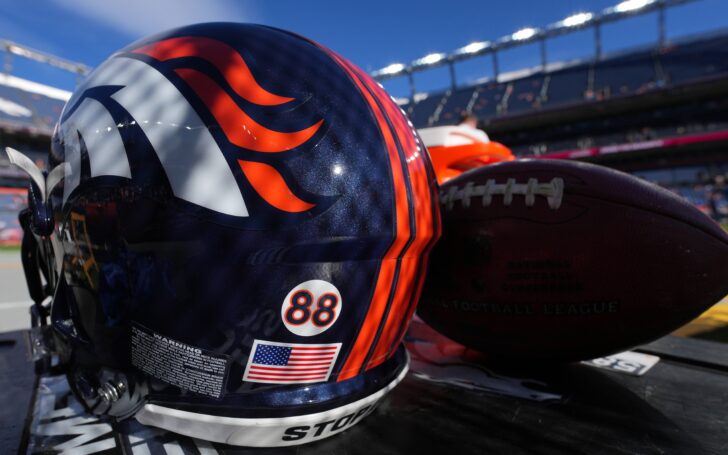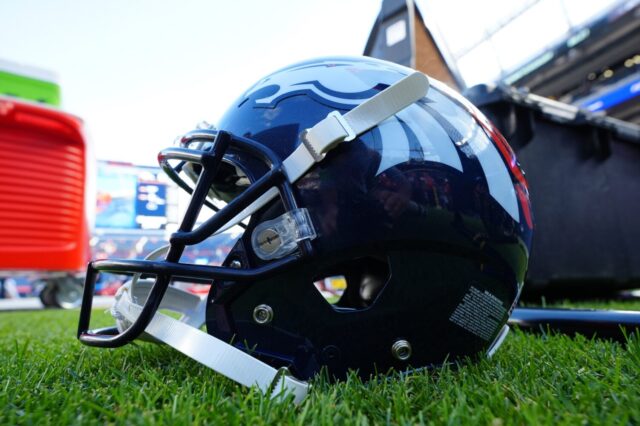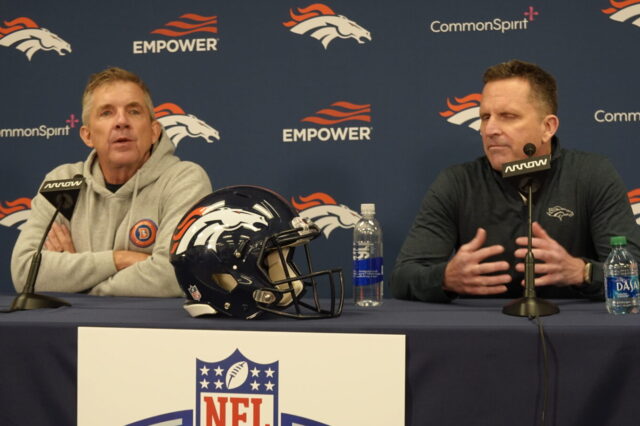Demaryius Thomas, one of the greatest personalities — let alone players — in recent memory for the Denver Broncos, passed away too early.
Las December, Thomas died in his Roswell, Georgia home. He was only 33 years old, and 15 days away from his 34th birthday. When it happened, family members believed Thomas died due to seizures, stemming back to a car accident which happened in 2019. The coroner has still not ruled on the cause of his death.
But when he did pass, the family allowed doctors at Boston University to study Thomas’ brain, finding he had CTE or chronic traumatic encephalopathy, well-known now to be linked to repeated hits to the head. Also, the length of a player’s career is linked to the severity of CTE they suffer from per the New York Times.
“CTE itself does not cause death. You don’t die from CTE,” Boston University’s Neuropathologist Dr. Ann McKee told ABC News per ESPN. “What CTE does is it changes your behavior and your personality.”
CTE has become well-known for turning loving, funny, friendly football players into horrifyingly violent men who lose their memory, with many dying by suicide.
Junior Seau died by suicide at age 43 and he may remain the biggest superstar to have passed away due to CTE. Seau was a monster on the gridiron, but in the years leading up to his death he was a chill, laid-back surfer who enjoyed strumming away on his ukulele. Until he wasn’t.
Seau died in 2012 when he shot himself in the chest, and it seemed like his death would really break the world of the NFL open. He was one of the most well-known defensive players in the league, with a huge smile and a great pass rush. But the league kept on churning through players and spitting them out.
Nine years later, DT died, the second Denver Broncos player to be linked to CTE (Rob Lytle was the first, as reported on in the Denver Post by Terry Frei). He was also maybe the biggest star since Seau to die with CTE, and the affable young man who was seemingly always smiling on the sidelines saw his mood change dramatically in the year leading up to his death.
“His mood would change, and he would also isolate himself sometimes,” Thomas’ mother, Katina Stuckey Smith, told ABC News. “He was, like, ‘Mom, I don’t know what’s going on with my body. You know, I gotta get myself together,’ and he said, ‘I don’t feel like myself anymore.'”
As football fans (and writers) we have become accustomed to players getting concussions on the field, to their heads bouncing off the turf only for team doctors to say, “Oh yeah, he’s good to go!” mere minutes later and see them back on the field.
Back in the day (the 1990s), concussions weren’t as worrisome. “Dingers” they were called. Players were protected due to the thick, padded, plastic helmets on their heads. At least we thought.
As time passed, and players started passing away, things started getting fishy and then it was finally revealed the NFL hid their concussion data.
The first case was Mike Webster in 2002 and the league actively hid the severity of concussions from their players for about 10 years until League of Denial — a book on the subject — came out in 2013.
Now, almost 10 years later, we all know the results of concussions. Oh, and don’t forget pre-concussive hits, too. It should be noted, that in the many years studying CTE doctors have found the “pre-concussive hits” — those which do not cause concussions like the linemen crashing helmets every play, etc. — are actually more important an indicator of whether or not a player will develop CTE than are concussions.
Back in the day, we celebrated huge hits, and many still do. Steve Atwater lighting up a receiver, or John Lynch, or even Bill Romanowski crushing a guy; we loved it.
Hey, it is part of the game. Mono-y-mono, man vs. man, “I’m tougher and stronger than you.”
But in recent years, those of us who now see football players more than pawns on the field to entertain us, we wince when someone gets lit up. Even when our favorite team’s player is the one providing the punishment.
The harsh realities are this: Football isn’t a contact sport, it’s a collision sport. And even as the league has actively tried to protect its players — taking the kickoff basically out of the sport, and adding many more safety-related rules — players are bigger, faster and stronger than they ever have been.
As fans of the game, whether we’re diverting our eyes during huge hits or actively asking for more of them, we’re complicit in the league mentally crippling their players.
DT’s death was heartbreaking, astonishing and a loss which came too soon in the young man’s life.
However, considering of the 111 brains Boston University has studied, only one didn’t have CTE: We’re likely going to be seeing more Broncos players, more NFL-wide stars die from CTE in the near future.
For many football fans, the game is a right of passage. Literally, of time passage. It marks fall’s arrival and it also represents a place where boys (and girls) bond with their fathers (and mothers) on Sundays. Some argue — because of its popularity — that football is the new “America’s pastime” and being the most popular sport, it’s now embedded into our culture.
And if we haven’t yet considered it, we will be soon wondering: Is this game, which is mentally devastating all of these young men, really worth it?



